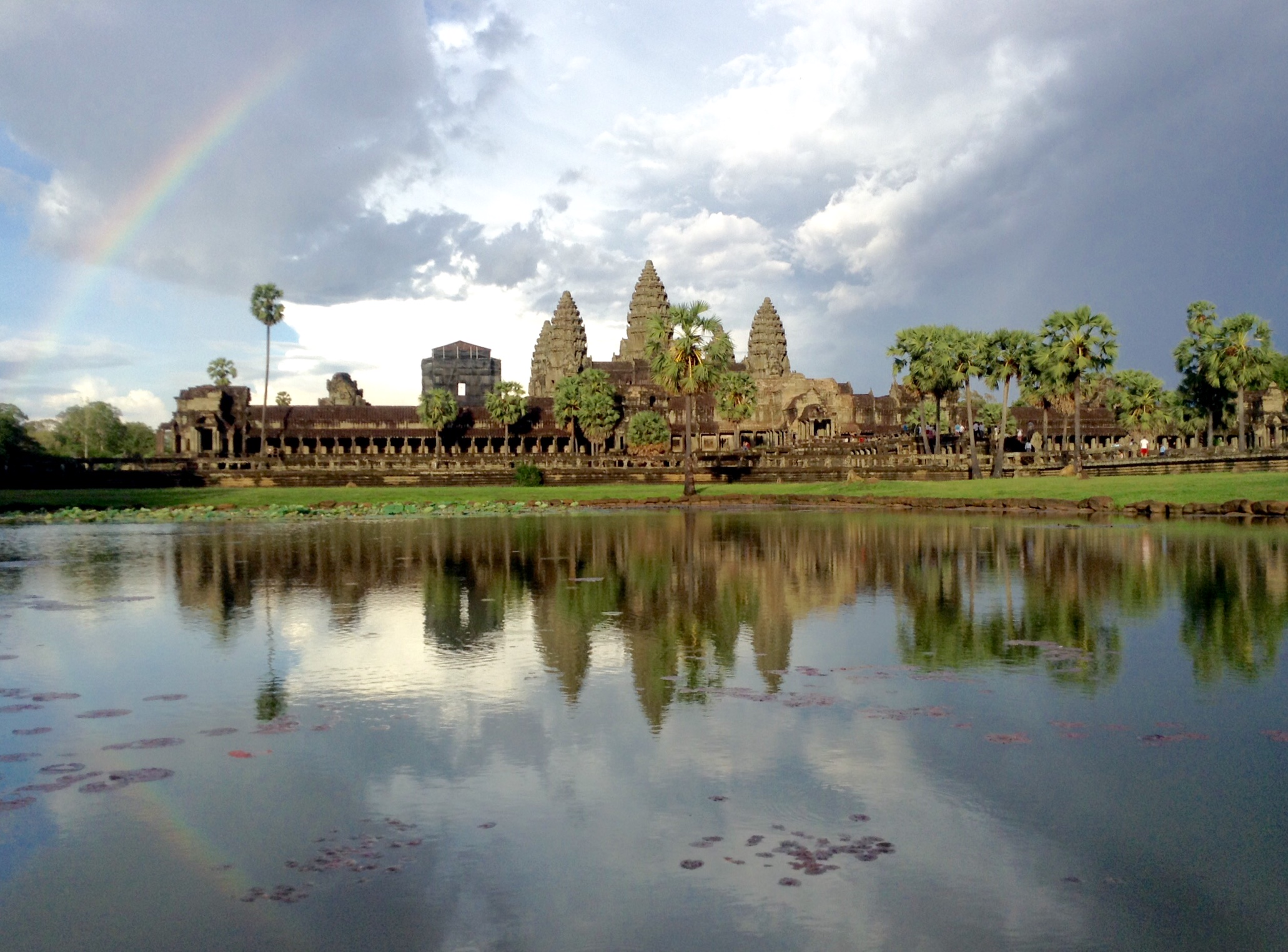Week Three
This week I visited Angkor Wat and Siem Reap.

Angkor Wat, pictured above, is only one of a series of temples in the area. The scale, variety, and sheer number of temples is staggering. Crafted from sandstone in the 12th century, Angkor Wat reaches over 200 feet above the ground as an example of classical Khmer architecture in the Angkorian style. After crossing a moat 620 feet wide, two walls, and a large yard, I entered the gate of the temple itself. One of the first things I noticed was the art. Most of the walls are decorated by figures carved directly into the stone. Statues abound, but sadly, many of the statues, including all the snakes, no longer have their original heads. The stone walkways have been worn smooth over countless generations of foot traffic. The stairs are steep, and the lawns well-maintained.
However, the grandeur of the temple was offset by a stark reminder of poverty as children clamored for tourists to purchase small souvenirs. “One for $1” quickly became “Four for $1.” “Help me go to school,” begged more than one child. It is more likely the proceeds will go toward dinner than school. The entrepreneurial spirit is alive and well as a product of necessity.
The recent history of the Khmer Rouge did not leave Angkor Wat unscathed. Used as a hideout by the Khmer Rouge during the 1970s and 1980s, my Khmer friend pointed out the unwillingness of opposition forces to damage the site. Nevertheless, the temple shows some signs of minor damage from this ordeal, including bullet damage.
The Angkor Empire, represented by Angkor Wat, seems to be both a source of national pride and a financial boon. After being largely forgotten for many years, the Khmer people have been rediscovring their heritage in the temples. Even today, new temples and cities are being rediscovered and history books rewritten. Both the Cambodian royal arms and national flag feature Angkor Wat. These beautiful and inspiring temples also draw tourists from all over the world. Siem Reap is filled with things for tourists to do—for a price. There is no shortage of museums, temples, and markets. Traveling with a Khmer friend crystalized the dichotomy between the local market and the foreigners’ market. Very few things are free for a tourists, but I certainly do not begrudge the locals trying to make a living. One of my favorite purchases is a scarf from a local woman who would weave the fabric by hand in her shop on a loom. In general, the markets of Siem Reap were less hectic, and the streets seemed safer, than in Phnom Penh. Outside of the direct tourist industry, such as tuktuks, tour guides, market vendors, and restaurant owners, it is not clear how much of the fees given to view temples and museums actually ends up benefiting locals. Siem Reap is at once vibrant and stagnant, depending on the area. There are incomplete and abandoned buildings all over the city. At other times, the market is booming. However, this seems to be normal for Cambodia.
Prices, while rising, are still unbelievably low, and the income for locals is a small fraction of even the poorest tourists' income. The entire experience reminds me to be grateful for the privileges granted by merely being born in the United States—from being a native English speaker to having unbelievable educational opportunities to having the comfort of the US consulate backing me. No matter how difficult life becomes, I still have much to be thankful for.
To view some of my favorite photos from this trip, click here.